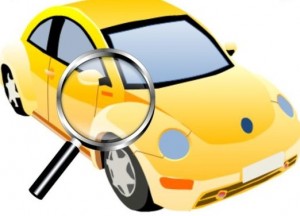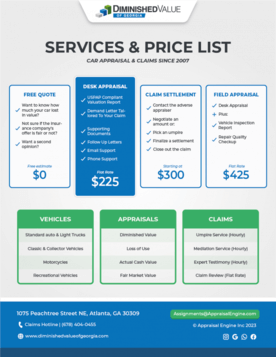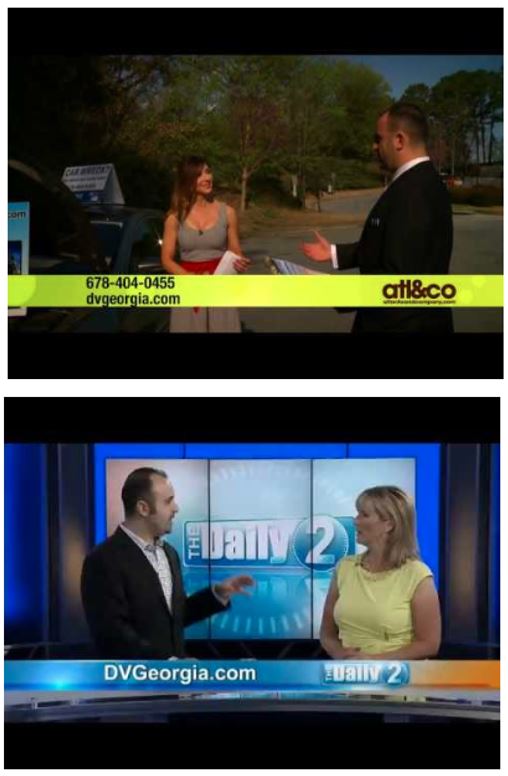 Detecting Collision Repair
Detecting Collision Repair
It used to be fairly easy to spot the signs of a collision repair: over-spray, bad color matching, and misaligned body panels. Now, with computers assisting with everything from frame straightening to color matching, it’s a lot harder to tell if a vehicle has been in a collision, especially if the repair was done well.
However, here are some quick, simple things you can watch for when you’re out looking at cars.
- A walk around the vehicle in good light will often disclose whether or not a body panel has been replaced or repainted.
- Look at the car from several angles to make sure the color matches across all the body panels.
- Look also at the re flections in the paint – factory paintwork is mirror-smooth, even when dirty or dinged up.
- Signs of repair often reveal themselves in a slightly rippled reflection, or a re flection that doesn’t exactly line up across two body panels.
- Be sure to look at refl ections from several angles.
- Check to make sure the body panels are all fl ush, and that the gaps between the panels are even from top-to-bottom and side-to-side.
If the car is so dirty that you can’t see refl ections, you might need to ask for the car to be washed. While you’re sighting down the sides of the car, c
Good places to look for paint over-spray or excess paint include:
- Around electrical conduits in door jambs
- Near door, hood, and trunk hinges
- On window and door seals
- Around seals and fittings in the engine compartment firewall
- Along the trim pieces inside wheel wells
Sun damage typically affects large body surfaces like hoods and roofs. When you see small patches of peeling clear-coat, especially in corners and other hard-to-reach areas, they may indicate a poorly prepped paint job. At the same time, beware of too-perfect paint. Even a garaged, well-cared-for used vehicle will have small paint chips and even minor dings. If the chin fascia beneath the front bumper is pristine, it may have been recently replaced or repainted.
Hands-On
If the car passes your initial visual inspection, it’s time to get hands-on. Feel around the painted edges of the hood, trunk, and doors. It is very diffi cult – almost impossible, in fact – to repaint a body panel and get the
edge as smooth as a factory- nish. You often can’t see the difference, but a re-spray will have a very slight roughness on the very edges. Before you go shopping, try this on a car you know to never have been repainted so you know what a factory
finish feels like. Inside the car, carpets and accessory mats make it hard to tell anything visually. So pat down the floors of the passenger compartment and trunk or rear compartment. Feel along the sills too. There should be no stray bumps or bulges in the underlying surfaces or overlying trim pieces.
Look Closer
A close look at areas where you suspect a repaint may reveal un-factory-like fl aws, including tiny bits of dust or lint under or within the paint.
Also, look under the car – you don’t have to look far underneath, because most collision damage affects the outside edges. A small hand mirror and a ashlight are useful things to bring with you car shopping. Things to look for include weld seams across the bottom of the body, paint overspray, excess undercoating, misaligned components, or holes indicating missing bolts or parts. Look at the bumper mounts – if they look newer than the rest of the underbody components, that’s a red flag. The same thing goes for engine mounts, although in some cars those are hard to see. This is also a good opportunity to eyeball the whole undercarriage for signs of leaking oil or other fluids.
The Test Drive
Even a well-used car should track straight and smooth at all speeds if it’s been reasonably well maintained. If it shudders or drifts to one side, it could need a simple wheel alignment, or it could need expensive suspension work – or, the very structure of the car could be bent.

 Detecting Collision Repair
Detecting Collision Repair




